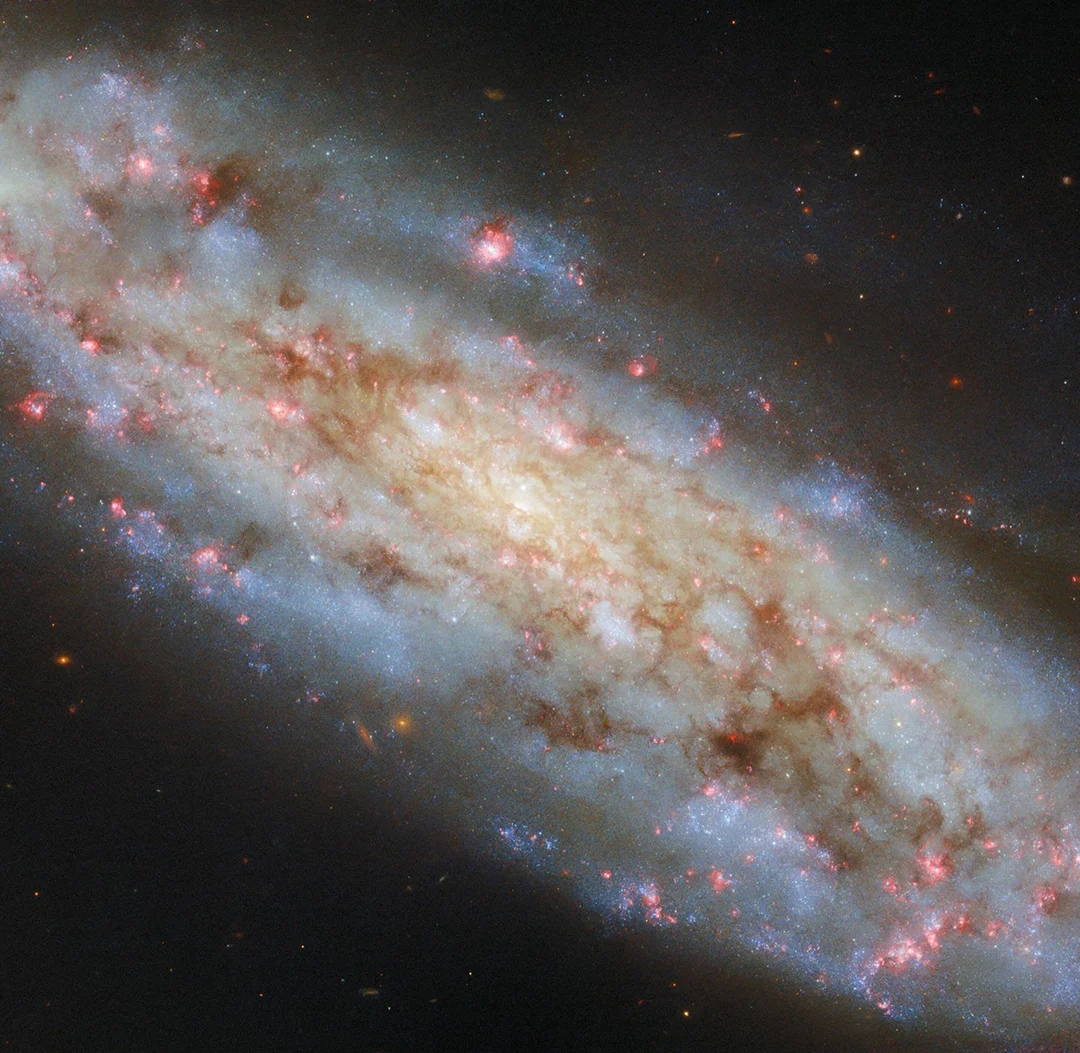
Hubble’s Stunning Image Reveals NGC 3511’s Star-Forming Secrets
The Hubble Space Telescope has once again delivered a breathtaking image, this time capturing the inclined spiral galaxy NGC 3511 in exquisite detail. Located approximately 43 million light-years away in the constellation Crater, this galaxy is a prime subject for astronomers studying the life cycle of stars. The image, a composite of observations across different wavelengths, reveals vibrant clouds of glowing gas and clusters of young, massive stars, offering valuable insights into the processes of star formation.

NGC 3511, also known as ESO 502-13, LEDA 33385, IRAS 11009-2248 or UGCA 223, was originally discovered by William Herschel in 1786. The galaxy is part of the NGC 3511 group, alongside other galaxies like NGC 3513 and ESO 502-024.
Hubble's unique vantage point allows us to observe NGC 3511 at an angle of approximately 70 degrees. “From Hubble’s vantage point in orbit around Earth, NGC 3511 is tilted by about 70 degrees, intermediate between face-on galaxies that display picture-perfect spiral arms and edge-on galaxies that reveal only their dense, flattened disks,” the Hubble astronomers explained.
This near-perfect angle provides a fascinating view of the galaxy's structure, showcasing both the beauty of the spiral arms and the dense galactic disc.
The observations are part of a larger survey studying the star formation cycle in nearby galaxies. The survey aims to record the appearance of 55 local galaxies using five filters designed to capture different wavelengths of light. A specific red filter is used to identify giant clouds of hydrogen gas energized by ultraviolet light from hot, young stars. As the image clearly shows, NGC 3511 is filled with these luminous red clouds often encircling bright blue clusters of newly formed stars.

Data collected from Hubble will enable astronomers to catalog the ages and characteristics of these newly born stars, which are typically just a few million years old and several times more massive than our Sun.
This stunning image underscores Hubble's continued contribution to our understanding of the universe. By analyzing the distribution and age of these stars, astronomers can further refine our models of galactic evolution and star formation.
What secrets do you think NGC 3511 holds, and what will Hubble uncover next? Share your thoughts in the comments below!